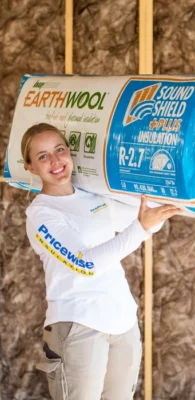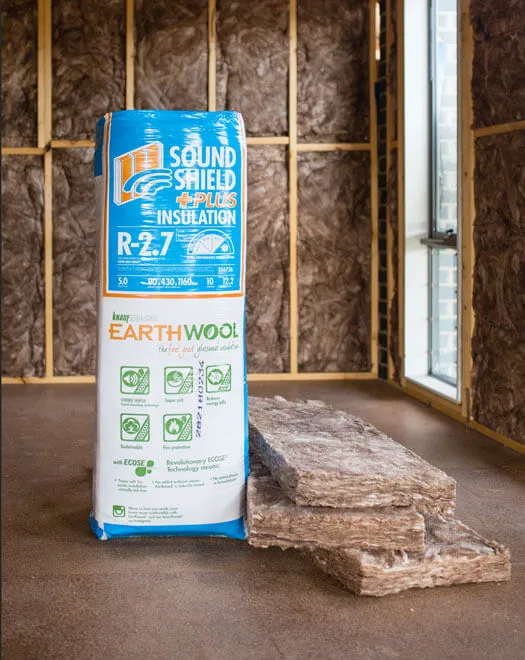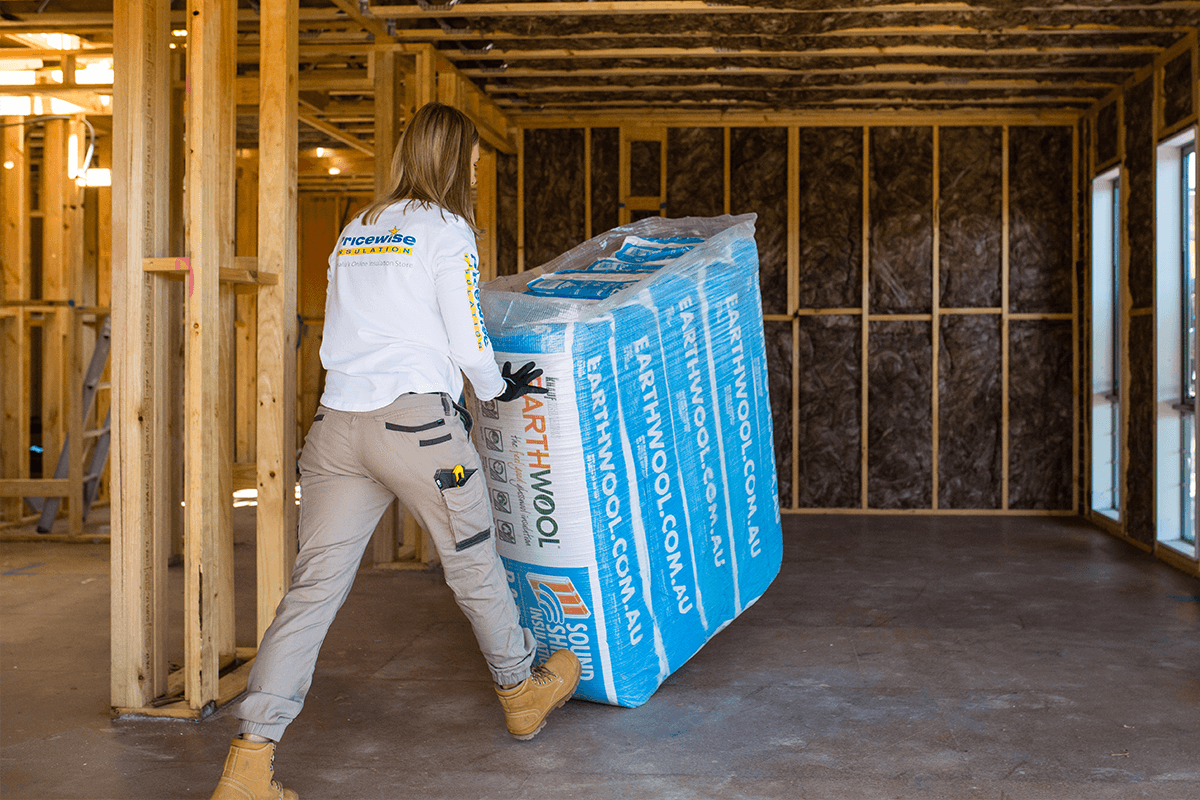Insulation Tips
How to Use Insulation for Sound Deadening
When most Australians think of insulation, they think of keeping a home cool in summer and warm in winter. But insulation has another equally valuable use – sound deadening. Whether you’re trying to create a quiet home office, block out noisy neighbours, or reduce plumbing noise through your walls, using insulation for sound deadening can make a huge difference in comfort and livability.
What Is Sound Deadening?
Sound deadening refers to the process of reducing the transmission of noise from one space to another. It’s often used interchangeably with soundproofing, but technically, sound deadening focuses on minimising vibrations and noise transmission through materials, while soundproofing refers to completely blocking sound. Sound travels through both air and structure – walls, floors, ceilings, and even pipes. The goal of sound deadening is to interrupt these pathways, absorbing or dampening the sound before it can reach your ears.
Why Sound Deadening Matters
Noise pollution is one of the most common complaints in both homes and workplaces across Australia. Urban density, traffic, construction, and even modern open-plan designs can make spaces feel chaotic and loud. Effective sound deadening can:
- reduce echo and reverberation inside rooms
- limit noise transfer between walls, floors, and ceilings
- improve acoustic comfort for home theatres or studios
- create quieter work-from-home spaces
- reduce plumbing and water flow noise in walls and ceilings.
Different Applications for Sound Deadening Insulation
Sound deadening insulation isn’t just for walls and ceilings – it can also be used around pipes and ducts to control plumbing noise. Let’s look at how insulation for sound deadening works across these different applications.
1. Sound Deadening for Rooms
When it comes to creating a quiet, comfortable home, sound deadening for rooms is often the first priority. Bedrooms, home offices, and media rooms are the most common spaces where Australians invest in acoustic insulation.
Best materials:
- Acoustic batts: Made from materials like glass wool, polyester, or rock wool, these batts fit into wall cavities and ceiling spaces to absorb airborne sound.
- Sound dampening blankets: These are heavy, flexible materials that can be hung inside wall cavities or along existing walls to absorb and block noise.
Where to install:
- Interior walls: Installing sound deadening insulation for interior walls reduces noise transfer between rooms.
- Ceilings and floors: Using sound deadening insulation for ceilings can help block noise from upstairs neighbours or between storeys in multi-level homes.
Adding an extra layer of plasterboard or a resilient channel system can also improve performance when combined with insulation.
2. Sound Deadening Insulation for Ceilings
Noise between floors is one of the biggest challenges in Australian homes – especially in apartments and double-storey houses. Footsteps, TVs, or even plumbing noise can easily travel through the ceiling.
Installing sound deadening insulation for ceilings helps absorb both airborne and impact sounds. The most effective products are dense acoustic batts or sound deadening blankets designed specifically for horizontal surfaces.
Tips for ceiling installation:
- Choose insulation with a high Noise Reduction Coefficient (NRC).
- Seal gaps and edges to prevent sound leaks.
- Combine with acoustic plasterboard or resilient furring channels for best results.
3. Sound Deadening Insulation for Interior Walls
Walls are the most obvious place to start when reducing noise transfer inside a home. Whether it’s blocking noise from a bathroom, laundry, or between bedrooms, sound deadening insulation for interior walls can make a big difference.
Best materials:
- Acoustic-rated insulation batts (commonly made by CSR Bradford, Knauf Earthwool, or Fletcher Insulation).
- Rockwool or mineral wool batts, known for their high density and fire resistance.
- Soundproof plasterboard or sound dampening blankets for existing walls where cavity insulation isn’t possible.
Pro tip: Combine insulation with acoustic sealant around outlets, windows, and door frames to stop sound leakage.
4. Sound Deadening Insulation for Pipes
One often-overlooked source of noise in Australian homes is plumbing. The rush of water through pipes – especially in multi-storey buildings or bathrooms with plastic piping – can be surprisingly loud. This is where acoustic pipe lagging comes in. Acoustic pipe lagging is a form of sound insulation specifically designed to wrap around pipes and ducts, reducing both airborne noise and structure-borne vibration. It typically consists of a dense, flexible vinyl barrier bonded to a layer of acoustic foam or fibrous insulation.
Benefits of acoustic pipe lagging:
- Reduces water flow and drainage noise in bathrooms, kitchens, and laundries.
- Prevents sound from travelling through wall cavities and floors.
- Helps meet building code acoustic requirements for multi-residential projects.
- Also improves thermal efficiency by reducing heat loss from hot water pipes.
Where to use it:
- Around waste and water pipes in walls and ceilings.
- On HVAC ducts to limit mechanical noise.
- In apartment buildings or duplexes where plumbing runs between living spaces.
Installing acoustic pipe lagging is straightforward – it’s wrapped securely around pipes and sealed with tape or fasteners, creating a continuous sound barrier that keeps plumbing noise under control.
5. Industrial and Commercial Applications
Beyond homes, sound deadening insulation is widely used in factories, workshops, and offices. Large open spaces with hard surfaces can amplify noise, making communication difficult and impacting comfort.
Here, sound dampening blankets or acoustic panels are often installed on walls or ceilings to reduce reverberation. These can also improve workplace safety by maintaining lower, healthier noise levels.
Choosing the Right Sound Deadening Material
Not all insulation is designed to block noise. When shopping for insulation for sound deadening, look for products with acoustic ratings – specifically:
- NRC (Noise Reduction Coefficient): Indicates how much sound the material absorbs. Higher NRC values mean better absorption.
- STC (Sound Transmission Class): Measures how well a structure blocks sound from passing through. Higher STC values mean better soundproofing.
Material options:
- Glasswool and polyester: Affordable, widely available, and suitable for most home applications.
- Rockwool (mineral wool): Denser and more effective for high-performance sound deadening.
- Mass loaded vinyl (MLV): A flexible, heavy barrier used with walls, ceilings, and around pipes for advanced noise control.
Final Thoughts
Whether you’re building, renovating, or just trying to get a bit of peace and quiet, insulation for sound deadening is one of the most effective investments you can make. From sound deadening for rooms to acoustic pipe lagging for noisy plumbing, there’s a solution for every sound problem.
In homes, a combination of acoustic batts and sound dampening blankets can transform the comfort of your living spaces. Around pipes, acoustic pipe lagging ensures the sound of running water doesn’t echo through your walls. And in commercial settings, acoustic treatments can enhance productivity and safety.
Silence might be golden – but with the right insulation, it’s also entirely achievable.



